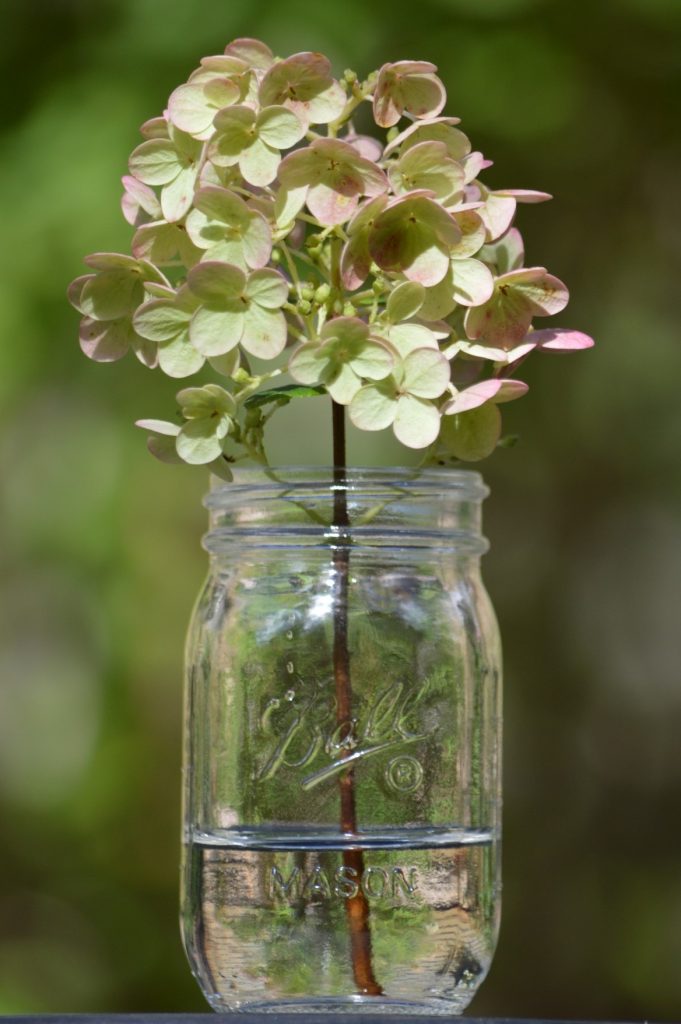
Hydrangeas come in a large variety of colors. Drying hydrangea flowers to enjoy throughout the winter months is incredibly easy to do. Although hydrangeas almost dry themselves, it’s important to cut them before they have gone too far. The timing of when you cut them is the most important factor when drying hydrangeas. If you cut them too early they will wilt, but if you let them go too long they will lose their color and turn brown.
Once the petals start to feel papery to the touch and take on a more muted tone, they are ready to cut. All the blooms on the bush may not be ready at the same time, so make sure you check each flower before you cut it. Once the hydrangeas have started to bloom, it is usually around six weeks that I start drying them.
Hydrangeas dry very well just by placing them upright in a container to dry. But using the water-drying method slows down the drying process, producing a prettier preserved flower. Once your hydrangea petals feel paper-like, cut the stems, remove the petals and place in a container with a small amount of water. Keep adding just a small amount of water if more is needed before the flowers are finished drying.
If you’re drying many flowers at a time, staggering their heights allows you to fit more stems into a container. Try not to overcrowd them. If you have a large bush and are planning on drying all of the flowers, you will need many containers. Clear containers work best, as this allows you to make sure the stems are always submerged in water. As long as you keep them out of direct sunlight, you can place your hydrangea-filled containers in different areas of your home to enjoy while they are drying.
Once the hydrangeas are dry, they are beautiful displayed alone or combined with other flowers. I enjoy using them in wreaths, like this Summer Harvest Wreath. They are a great filler, and they add a touch of softness and nostalgic charm to a dried flower display.

